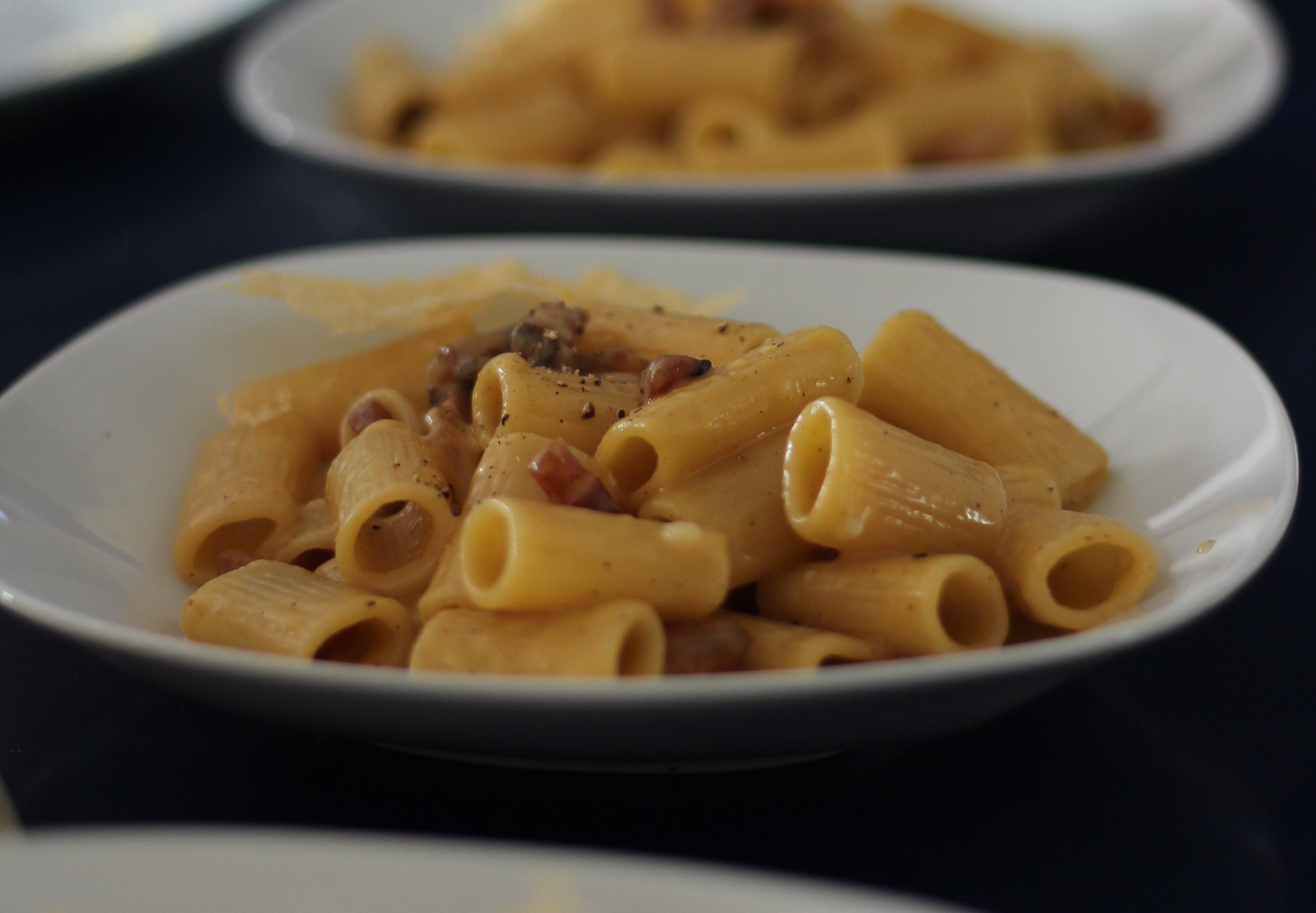When we think of Roman pasta classics the likes of Carbonara and Cacio e Pepe spring to mind, but we often forget about the lesser-known delight Pasta alla Gricia.
One of the oldest Roman pasta dishes, Pasta alla Gricia is a testament to the art of minimalism with just three simple and delicious ingredients. The recipe is believed to be born in the kitchens of travelling shepherds or Grici, who relied on simple, delicious and easily transportable ingredients; Guanciale, Pecorino and black pepper.
It’s best paired with a tubular pasta shape like rigatoni which provides the perfect vessel for holding the decadent sauce. Some prefer to use a long and thin pasta type, in which case we’d recommend using bucatini which is similar to spaghetti but with a hole running through the center, allowing the sauce to cling to and coat the pasta effectively.
